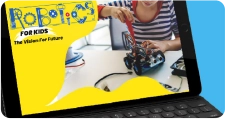
STEAM is the Way to Go
STEAM is an educational framework that approaches learning with Science, Technology, Engineering, Arts, and Mathematics. These streams serve as access points in guiding critical thinking, problem solving, inquiry, and dialogue. This article will talk about why STEAM education is crucial for children amidst the widespread culture of mass-scale AI and automation. Furthermore, this article also highlights the several benefits of the STEAM learning framework.
Most industries are already adopting newer technologies like AI and automation. This transformation is ushering a rapid change in both jobs of today and the future. It is already predicted that within the next few decades, millions of jobs will be lost to these emerging technologies. Moreover, AI and automation will also open up millions of new jobs throughout the world that would not only require STEAM skills but also reward entrepreneurship and innovation.
This means that our children will be working as professionals in a future where jobs revolve around human ingenuity, creativity, empathy, and problem-solving – things that machines are incapable of. Keeping this in mind, educational frameworks like STEAM seem to be the way forward being one of the best ways to prepare our children to thrive in such a future.
Why is STEAM education important
Education has long served as a tool to enable children to secure “good jobs”. However, considering the archaic and inflexible nature of the current educational systems, institutions are preparing kids for jobs that won’t even exist in the near future.
If children are to be successfully prepared to secure jobs in the future, they must learn in an educational framework that promises to cultivate skills like curiosity, creativity, critical thinking, and problem-solving. This is where STEAM comes in.
STEAM was first proposed and implemented by the Rhode Island School of Design (RISD) as a means to add Arts and Design to the original STEM framework. Their goal was to foster innovation that came with “combining the mind of a scientist or technologist with that of an artist or designer”
The STEAM educational framework serves to give children the tools and methods to explore new and creative ways of innovating, problem-solving, displaying data, and linking multiple fields. Moreover, STEAM also empowers educators by enabling them to utilize project-based learning which not only interlinks each of the five disciplines but also provides an inclusive learning environment where children can engage and contribute. The inclusion of arts in STEM subjects naturally allows for deeper understanding, innovation, and holistic education in classrooms.
This furthers the argument that STEAM learning is crucial for raising the next generation of entrepreneurs, inventors, and creators that address our society’s biggest challenges.
STEAM vs. STEM
Now that the STEM to STEAM movement is picking up speed, it is clear that it is the only future-forward educational framework that meets the needs of the 21st-century world. STEM, by itself, foregoes several vital components that are crucial for children to thrive in the competitive job sectors of the future.
While STEM promises more experiential learning, it is limited to science, technology, math, and engineering. The world’s rapidly evolving gig economies require so much more than a rudimentary understanding of these subjects. It requires creativity, practical application, and most of all, ingenuity. STEM doesn’t always foster these vital skills by itself.
STEAM takes STEM to the next level by integrating arts and design. It allows children to connect their learning in these streams with design principles, art practices, and standards to use their learning in more practical ways. STEAM removes the limitations of STEM and introduces elements of critical analysis, inquiry, creativity, and innovation.
Benefits of STEAM Learning
- Prepares children for emerging technologies – STEAM teaches kids to be enthused about newer technologies. It prepares them for future innovations that they will experience when they grow up.
- Bolsters understanding – STEAM education engages children and allows them to apply learned concepts in a deeper, more hands-on way. This enables a better understanding of what is learned in the classroom.
- Enhanced problem-solving – STEAM education not only develops but also encourages problem-solving skills. STEAM learning activities teach kids how to analyze problems and then work creatively to solve or overcome them.
- Creativity and Innovation – STEAM fosters innovation through arts and design. It directly fuels new technologies and ideas and encourages kids to address problems in novel ways and think outside-the-box.
- Teaches communication, teamwork, and collaboration – STEAM enables children to learn and work together. It helps them communicate and find solutions effectively through recording and analyzing data, giving presentations, and writing reports.
- Holistic Learning – Finally, STEAM learning helps children experience the entire process of completing a project – from start to finish. This involves planning, research, data gathering, designing, and problem-solving.











